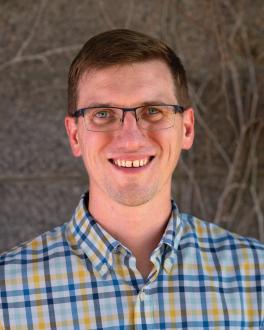Graduate alumni are using their skills in many lines of work. Career allies can support graduate students as they discern what career path is right for them. “Flight Paths” is series of alumni profiles — produced by the Global Arts and Humanities Imagined Futures: Graduate Professional Development Initiative— that highlights the key roles mentors play in equipping graduate students to imagine and prepare for a diverse array of meaningful careers. Each story describes a mentorship strategy that alumni found pivotal to their career success.

Rethinking Success
When Tate Steidley was studying for his PhD in Sociology, he felt that every part of the program was directed toward helping the students enter tenure-track professorships in research universities. Steidley found that the program prepared him well for that kind of work: he served as a graduate teaching associate and developed a strong portfolio of quantitative research skills.
After he graduated in 2016, he landed the tenure-track position—and discovered that it left him cold. In a “publish-or-perish” environment, he produced fifteen research articles in five years, sometimes at the expense of time with family. As he developed and taught new courses, he found the teaching draining rather than restorative: he would “leave feeling like a husk of a person.” Steidley recalls, “I was up for tenure, and everybody was saying that I was going to get tenure, that it wasn't a big problem. But I knew that working in higher education I was deeply, deeply unhappy, and so I had to make a career change.” Steidley compares his exit to “pulling the rip cord on a parachute”: he left the academy and began looking for a position in government.
Life Beyond the Tenure Track
Today, Steidley serves as the evaluator for the Office of Suicide Prevention in the Colorado Department of Public Health and Environment. The office provides suicide prevention training for health care providers and connects a variety of community partners with essential resources, including a call center that follows up with people discharged from emergency rooms who exhibit suicidal risk. Steidley tracks program data to report the outcomes of the office’s programming, providing updates to the governor’s office and reporting to the federal agencies that provide grant funding for this work. Because program evaluation feeds back into the operation of the programs, Steidley is not just monitoring the results: he is helping to improve the programs.
This work draws extensively on the training Steidley received as a PhD student. Grant-writing and working with government data sets were part of his research training and knowing how to talk about these topics helped him make the transition. “Every day I'm using some of the problem-solving skills or some of the research-based skills.,” he reports. “I'm still reading articles. I'm still doing data analysis. I am able to use the skills I developed in a way that is helping others.”
But the nature and pace of the work is a better fit for Steidley than his academic position was. He points out that the PhD trains people to polish their work to perfection; that’s often not necessary in roles in industry or government. “I've learned to be more productive and get more done by allocating my time and resources in a way that meets the needs.” Steidley found that it’s possible to do a job well but maintain a work-life balance.
Opening New Pathways
Steidley advises students to “moonlight”—to start trying on jobs during their graduate programs. Finding a professional association that is not focused on academic research, but rather serves people who do particular kinds of jobs (like program evaluation), can help open the door to work in that field. “I would ask people how they got into their roles, and learn from them, or help them with their projects.” Connections like this can also lead to job shadowing, internships, or other kinds of entry-level work experience.
Steidley observes that faculty advisors may feel like they don’t know much about industry roles, and that faculty have an incentive to produce students who enter the professoriate. Students often perceive that they should not mention interest in work outside the academy, for fear of losing advisors’ support. Looking back, Steidley wishes that faculty felt free to connect students with alumni working in a wide variety of roles. An advisor saying “let me connect you with somebody who's in that field” could help students feel that many kinds of rewarding work are within reach.
The Takeaway
Steidley’s journey shows that leaving academia is not failure—it can be an opportunity to align skills and values in new ways. By embracing change, he has found work that makes a tangible impact while supporting a sustainable life beyond the tenure track.
